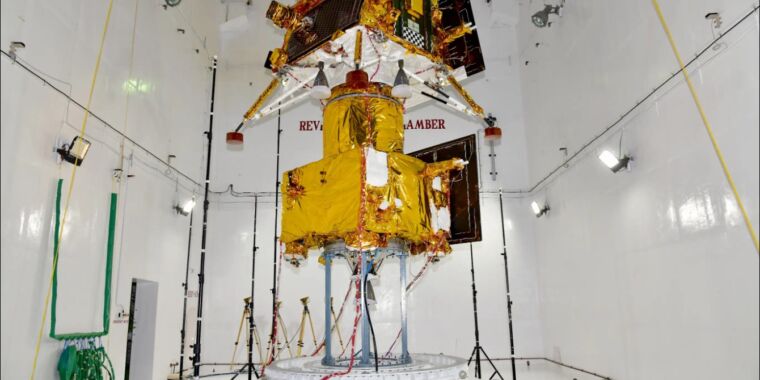The news is full of it, excitement seems high, and I really don’t get it. I’m not against space-related research, but why suddenly the moon? And why send people there? Can someone fill me in on what’s to be gained or why one might be excited about it?
Allow me to use the linked article for my questions.
There have been three primary drivers of renewed interest in the Moon. The first was the discovery and confirmation in the 1990s and early 2000s that water ice is likely to exist at the lunar poles in permanently shadowed craters. The presence of abundant water, providing oxygen and hydrogen resources, has given space agencies a new reason to explore the poles.
Yea but so what? Hydrogen is literally the most common thing in the universe, no fucking way there is also some on the moon 🤯. Then what’s so spectacular about moon ice, water, or even oxygen? And why does it need people to explore it?
A second factor has been the rise of China’s space program, which has sent a series of ambitious robotic missions to the Moon that have both landed on the far side and returned samples from the lunar surface. China has made no secret of its interest in sending astronauts to the Moon, leading to competing efforts between NASA’s Artemis Program and China’s lunar station goals.
Again why? Is this some repetition of the Cold War Soviet-US competition?
Finally, there has been some interest from private companies in the commercial development of the lunar surface, both to exploit resources there but also for other purposes. This has stimulated investment in private companies to provide transportation to the lunar surface, including ispace, Astrobotic, Intuitive Machines, and Firefly.
Exploiting resources has to be a joke, right? Do they want to sell us the newly found moon water? The only point I get is the tourism aspect. Because, of course, I always encourage billionaires to pursue dangerous hobbies 😊



No, there is a resource on the moon that could be a game changer for humanity. Heluim-3.
What is He3?
He3 is produced in the sun and arrives at the moon via the solar wind, which constantly hits the moon due to no atmosphere or magnetic field to absorb or deflect it.
The earth has basically zero He3 as the solar wind is deflected by the earth’s magnetic field.
Why could it be important?
He3 is a very good fuel for Fusion.
The 2009 movie, Moon, centres around a future He3 mining operation.
We actually have quite a bit of it here on Earth. Much of it comes from old sources, like our first lithium on Earth when the planet was still a ball of molten material. Many of the neutrons from space directly impacted our earilest lithium desposits that were exposed to the vaccum of space. This created a lot of Helium-3 via spallation. A lot of that newly created Helium was vented directly into space never to return, however some became trapped.
The problem of that is, much of that gas is trapped deep in pockets too close to the mantle for anything manmade to ever reach. So we must wait for cracks to form allowing the gas to rise up away from the incredibly hot mantle to somewhere machines can access.
Additionally, we have Uranium and Thorium in the core of the planet emitting Helium-3/4 as a decay product. For pretty much the same reason with the exception that the core is MUCH deeper than the mantle, we’re unable to access that gas and must wait for it to slowly bubble up.
We do also have some that’s been “frozen” in underwater soil as a result of underwater nuclear bomb testing. However that is mostly inaccessible to us due to the contamination of the soil of much deadlier material also “frozen” in place there. Which also means that we can produce Helium-3 ourselves, but it comes at a massive cost. So finding a natural deposit would be ideal.
Uh, sort of. D + He-3 fusion is what’s touted as ideal. The product of the fusion reaction is 50/50 of He + p + 18.3 MeV and He + 2p + 12.86 MeV. The thing is, the deutrium cannot be always assured to mix with the Helium-3 100% of the time. So you will have some D+D fusion which will result in neutrons.
The is also a He-3 + He-3 fusion which provides no path for neutrons. However, the activation tempature is much higher and you must keep the reaction at a hotter tempature (requires stronger magnets that must be massively cooled). If we were ever to go for pure He-3 fusion, it would be likely a 3rd or 4th gen reactor design. There’s a ton of challenges to making it commerically viable.
Changesite
Thaf is too far back. I promise you, this is what they want.
From your link: Changesite
“The lunar crystal is made of material previously unknown to the scientific community and contains a key ingredient for the nuclear fusion process”
“One of the primary ingredients found in this crystal is helium-3, which scientists believe may provide a stable fuel source for nuclear fusion reactors.”
Yeah… i saw. My bad.
All good. I had never heard the name before so reading it was “Ah, that’s the Chinese name for it”.
My bad. It seems like both are the reason because helium-3 is also found IN changesite.
How is He3 a good fusion fuel?
There are two possible uses of He3 in fusion power.
Deuterium + Helium-3 yields the highest energy of possible fuels.
Helium-3 + Helium-3 lower yield but produces no neutrons. This makes designing a fusion power plant much easier.
Yes, but the probability of fusion is lower and also requires 5 times more energy for fusion to occur.
https://youtu.be/2DzKXN1pcwY?t=189
Thus, it requires a lot higher temperature to get the same result as D-T fusion.
https://youtu.be/2DzKXN1pcwY?t=515
The video doesn’t talk about He3-He3 fusion, though.
Here is an alternative Piped link(s): https://piped.video/2DzKXN1pcwY?t=189
https://piped.video/2DzKXN1pcwY?t=515
Piped is a privacy-respecting open-source alternative frontend to YouTube.
I’m open-source, check me out at GitHub.
The biggest issue we have with D-T fusion power is the supply of Tritium.
“Roughly one in every 5000 hydrogen atoms in the oceans is deuterium, and it sells for about $13 per gram. But tritium, with a half-life of 12.3 years, exists naturally only in trace amounts in the upper atmosphere, the product of cosmic ray bombardment. Nuclear reactors also produce tiny amounts, but few harvest it.”
“In order to breed tritium you need a working fusion reactor, and there may not be enough tritium to jump-start the first generation of power plants. The world’s only commercial sources are the 19 Canada Deuterium Uranium (CANDU) nuclear reactors, which each produce about 0.5 kilograms a year as a waste product, and half are due to retire this decade.”
Source
There is no easy path to fusion, there is only ~25kg of Tritium on earth, while there are millions of kg of He3, but it is on the moon.
Neither option is ideal.